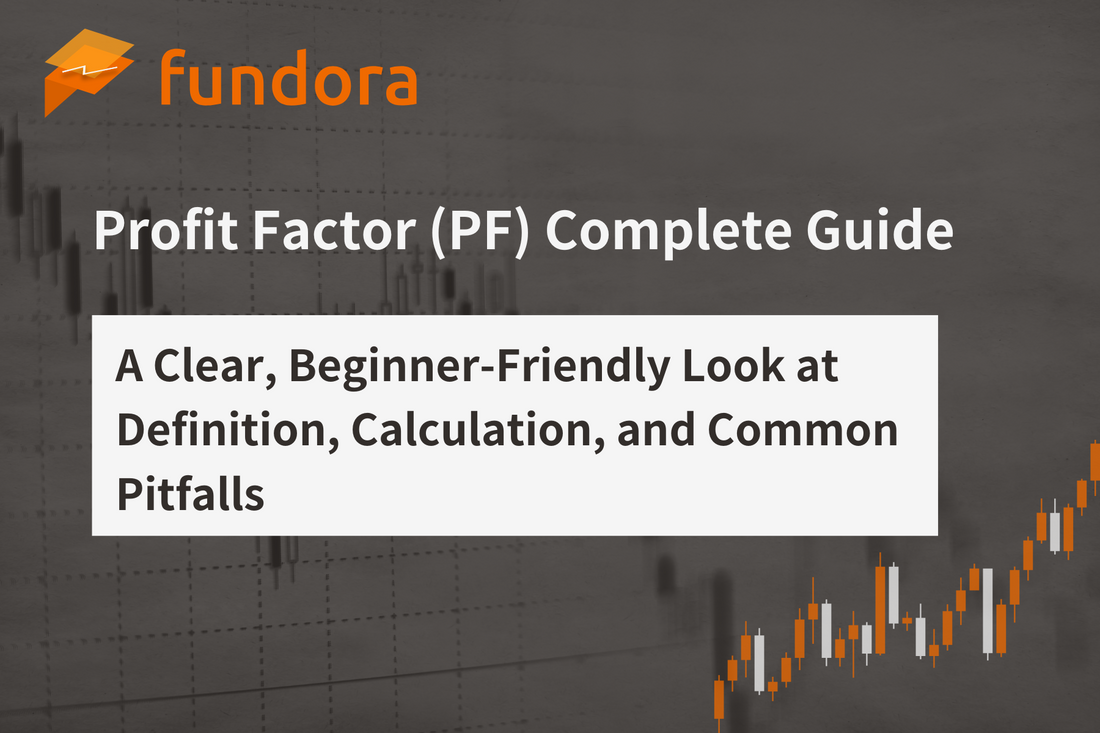
Complete Guide to Profit Factor (PF)|Definition, Calculation, and Common Pitfalls Explained
Share
Table of Contents
- 1. Overview
- 2. Definition and Calculation (Start Here)
- 3. How It Helps (Use Cases)
- 4. Example (PF in Numbers)
- 5. What PF Alone Cannot Tell You
- 6. Common Confusions and Terminology
- 7. Mini Exercise (Calculate Your PF)
1. Overview
Profit Factor (PF) is an indicator that expresses the ratio of "total profit" to "total loss" over a certain period as a single number. It quickly shows how well the “balance of wins and losses” has been over the entire period. It is widely used in backtesting Expert Advisors (EAs) and reviewing discretionary strategies.
2. Definition and Calculation (Start Here)
PF = Total Profit ÷ Total Loss
- PF > 1 → Net profit overall (profit exceeds loss)
- PF = 1 → Break-even overall
- PF < 1 → Net loss overall
The key is that it evaluates using the “sum” over the period, not the average.
3. How It Helps (Use Cases)
Assessing the “first impression” of an EA or strategy
- When comparing multiple strategies under the same conditions (instrument, timeframe, cost assumptions), PF provides intuitive insight. It’s useful for initial screening.
Supporting hypothesis validation
- When testing new trading rules, PF summarizes the balance of profit and loss over the period. If PF remains stable across different market conditions (trend/range) or sessions, it gives a sense of reproducibility.
4. Example (PF in Numbers)
Example: Suppose the results of 10 trades are as follows:
- 6 winning trades: +12,000, +8,000, +15,000, +5,000, +10,000, +22,000
- 4 losing trades: −9,000, −6,000, −12,000, −18,000
- Total Profit = 12,000 + 8,000 + 15,000 + 5,000 + 10,000 + 22,000 = 72,000
- Total Loss = 9,000 + 6,000 + 12,000 + 18,000 = 45,000
- PF = 72,000 ÷ 45,000 = 1.60
- Interpretation:
This period shows a balance of “1.60 profit for every 1 loss.” However, PF alone should not be used to judge quality—other checks (see below) must be considered together.
5. What PF Alone Cannot Tell You
Disadvantages
- PF can look the same while the “contents” differ: A single large win that inflates PF versus a steady series of smaller wins will feel very different in terms of risk, even if the PF value is similar. Always check profit/loss distribution, maximum drawdown, and losing streaks alongside PF.
- Method of aggregation changes its nature: PF will differ if calculated “per trade” vs. “per day.” Always align aggregation units and timeframes when comparing.
- Division-by-zero issue: If there are no losses during the test period, total loss = 0 and PF cannot be defined (practically treated as “∞” or “N/A”). In this case, review the sample size or test conditions.
6. Common Confusions and Terminology
PF vs. Payoff Ratio
- Payoff Ratio = Average Profit ÷ Average Loss (per trade balance)
- PF = Total Profit ÷ Total Loss (overall balance)
- “Risk-Reward” generally refers to the Payoff Ratio, not PF. They measure at different granularities.
On Japanese terminology
- Translating “Profit Factor” as “profit rate” can be misleading since “profit rate” often refers to return on capital. In practice, it’s safer to use “Profit Factor (PF)” as-is.
7. Mini Exercise (Calculate Your PF)
From your trade history, sum up the winning trades as “Total Profit” and losing trades as “Total Loss.”
PF = Total Profit ÷ Total Loss
Be sure to note the “timeframe,” “number of trades,” and “treatment of costs (included/excluded).” This ensures fair comparisons